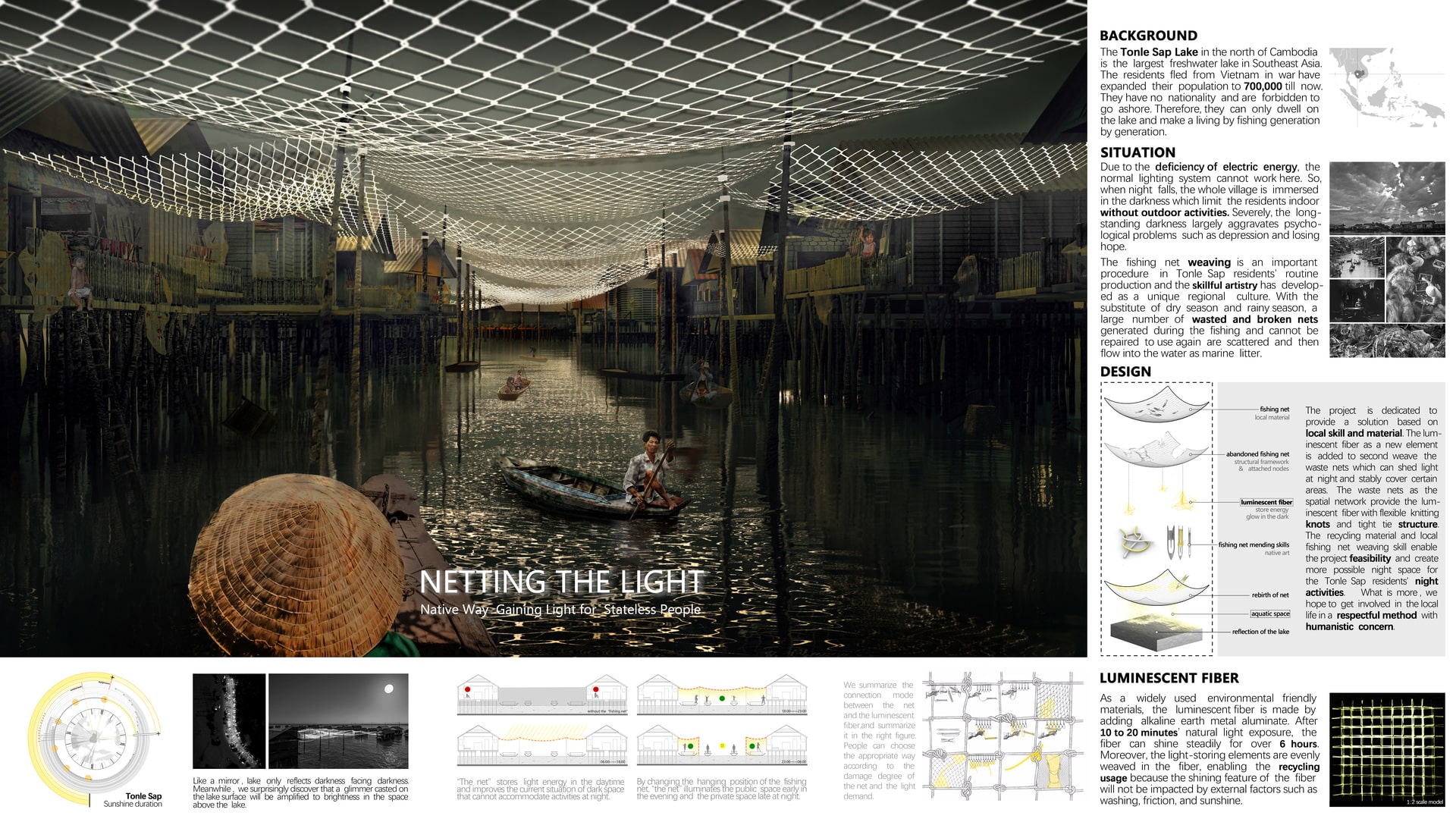Project Description
Like a mirror, lake reflects darkness facing darkness. Meanwhile, we surprisingly discover that a glimmer casted on the lake surface will be amplified to brightness in the space above the lake. The Tonle Sap Lake in the north of Cambodia is the largest freshwater lake in Southeast Asia. The residents fled from Vietnam in war have expanded their population to 700,000 till now. They have no nationality and are forbidden to go ashore. Therefore, they can only dwell on the lake and make a living by fishing generation by generation. Due to the deficiency of electric energy, the normal lighting system cannot work here. So, when night falls, the whole village is immersed in the darkness which limit the residents indoor without outdoor activities. Severely, the longstanding darkness largely aggravates psychological problems such as depression and losing hope. The fishing net weaving is an important procedure in Tonle Sap residents’ routine production and the skillful artistry has developed as a unique regional culture. With the substitute of dry season and rainy season, a large number of wasted and broken nets generated during the fishing and cannot be repaired to use again are scattered and then flow into the water as marine litter. The project is dedicated to provide a solution based on local skill and material. The luminescent fiber as a new element is added to second weave the waste nets which can shed light at night and stably cover certain areas. The waste nets as the spatial network provide the luminescent fiber with flexible knitting knots and tight tie structure. The recycling material and local fishing net weaving skill enable the project feasibility and create more possible night space for the Tonle Sap residents’ night activities. What is more, we hope to get involved in the local life in a respectful method with humanistic concern. As a widely used environmental friendly materials, the luminescent fiber is made by adding alkaline earth metal aluminate. After 10 to 20 minutes’ natural light exposure, the fiber can shine steadily for over six hours. Moreover, the light-storing elements are evenly weaved in the fiber, enabling the recycling usage because the shining feature of the fiber will not be impacted by external factors such as washing, friction, and sunshine.
